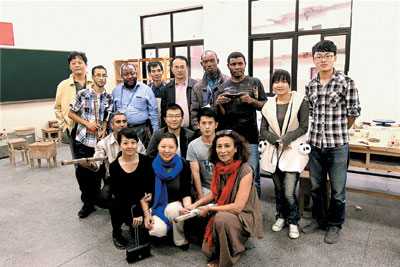
Wang Yuanyuan
cheekywang@hotmail.com
THE legacy of the 2011 Shenzhen Universiade is still making its presence felt. This time the ripple goes beyond the sports industry and enters the cultural sector.
Six ceramic artists from Gabon, Morocco and Tunisia were invited to attend an exchange activity held at the Jingdezhen Ceramic Institute in Jiangxi Province on Aug. 13. As a key program supported by a UNESCO Ruby Strategy Fund, the exchange activity was aimed at promoting traditional ceramic art and helping improve ceramic art in developing countries, said Wayne Hongwei Wan, chairman of Ruby Group.
“The activity is significant for artistic exchange between China and Africa. African people have already known about the important influence brought by China’s rapid economic development, but more promotions should be done to let us know about China’s significant achievements in cultural development,” said Georges Pendy, an art professor from Gabon.
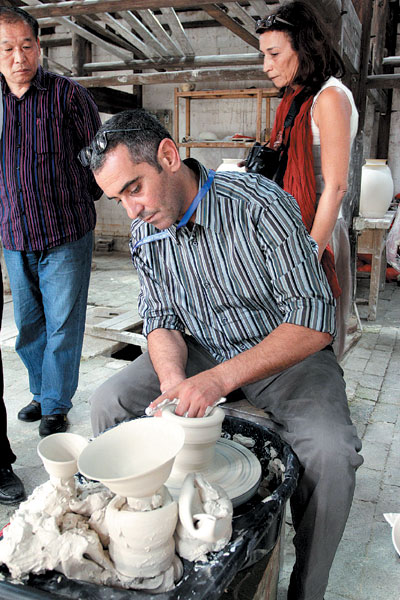
During the five-day event in Jingdezhen, lectures and seminars on ceramic techniques, as well as promotions were held and the artists also worked together to compare and contrast Chinese and African art.
Made possible by Universiade
In 2011 when the Shenzhen Universiade was being held, Wayne Hongwei Wan signed the first strategic partnership agreement as Chinese private sector with Irina Bokova, director general of UNESCO.
According to the agreement, the Ruby will donate US$1 million to the UNESCO to protect cultural diversity in developing countries and help improve the countries’ economic development through cultural construction.
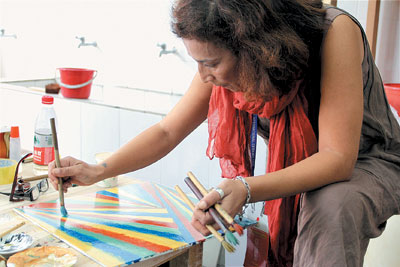
“The UNESCO promotes the protection of intangible cultural heritage and cultural diversity. We will benefit because we hope to introduce our most traditional and influential ceramic arts to the world while inviting overseas artists to communicate with us. The exchange could lead to more innovation,” Wan said.
According to the plan, the program will invite art professors and students from Africa and Arab states every year to Jingdezhen for training and exchange activities. The country’s leading ceramic art masters acknowledged by UNESCO will be invited to give lectures.
Chinese ceramic artists will also be sent to train students in these countries.
The fund will help artists bring their work to domestic and international exhibitions and an annual awards ceremony will also be held for outstanding ceramic artists in China and Africa.
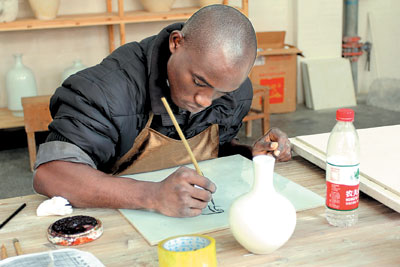
Ceramic artists from other countries and regions will also be invited to get involved.
“We hope that we can draw attention and support from around the world,” Wan said.
Despite its impressive history in ceramic art, China has fallen behind countries such as Japan and Germany. “We need more creativity, learning and exchange opportunities to improve our skills,” Wan said.
Protecting cultural heritage
“In a global economy, it is a struggle to preserve cultural heritage in developing countries. As everybody knows, Africa is the UNESCO’s top priority, and helping African people improve their lives is a moral obligation,” said Hans d’ Orville, assistant director general for strategic planning with UNESCO at the opening ceremony of the program in Jingdezhen.
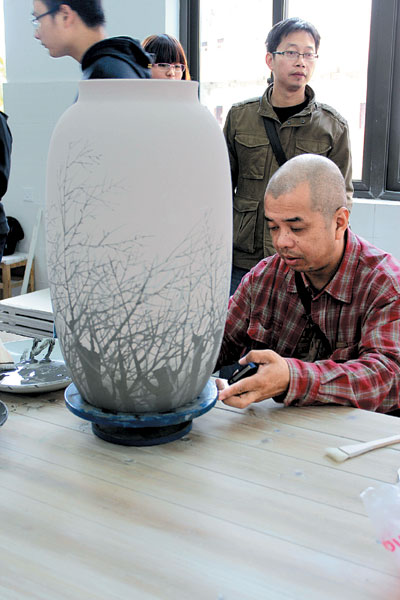
“China has a long history of ceramic arts. Thank to explorers such as Marco Polo and Zheng He and numerous traders who traveled the Silk Road, these ceramics products have been used around the world. This exchange is necessary and timely,” he said.
“It was a great experience, improving our understanding of Chinese ceramic art and ‘Jingdezhenology.’ As ceramic artists, we are already familiar with the techniques of making ceramics and now we are focusing on how Chinese ceramic art can become a precious heritage and what makes Chinese ceramic art outstanding,” said Besma H’lel, an art professor from Tunisia.
A journey to the world
Building such a platform in Jingdezhen is also very meaningful for Chinese traditional art and culture.
Targeting becoming one of the world’s leading exchange centers for ceramic art, the Jingdezhen Ceramic Institute had high hopes for the program.
The institute agreed with art professors in the three countries and would take more of their joint works to next year’s China (Shenzhen) International Cultural Industries Fair.
“When the four-year program is over, we will make a documentary about our achievements and show it at the UNESCO headquaters. It is a great opportunity for improving our techniques and opening international markets,” said Chen Yuqian, vice president of the institute.
|

